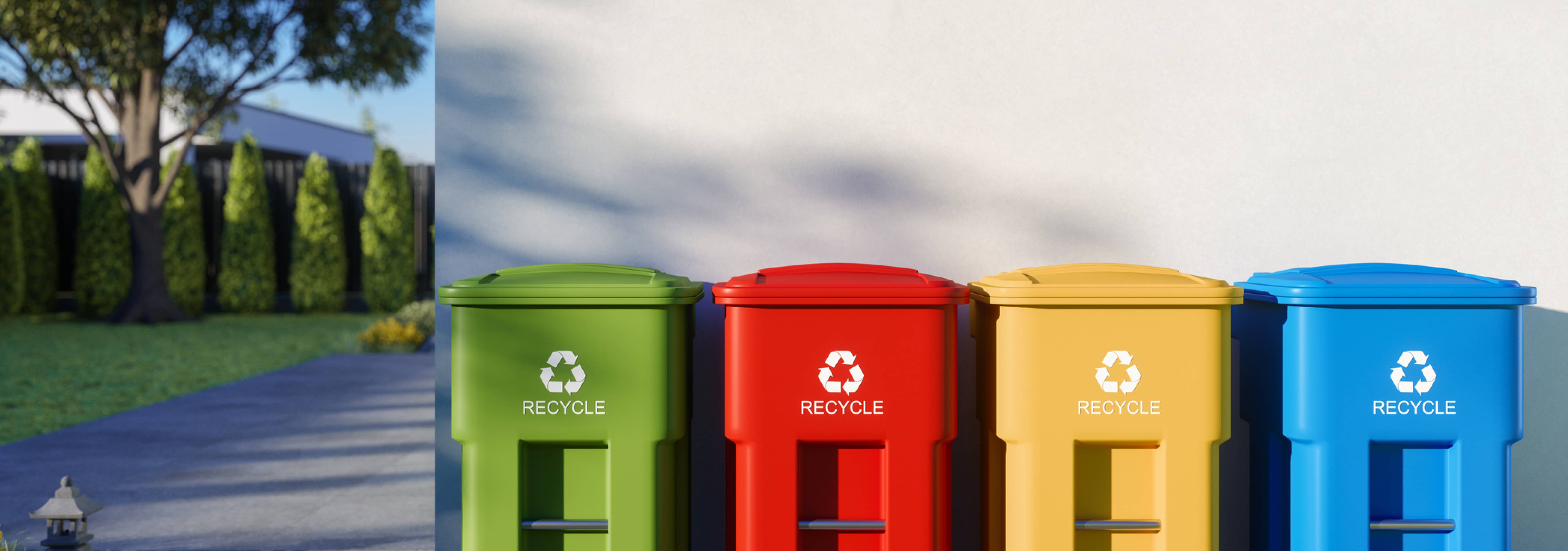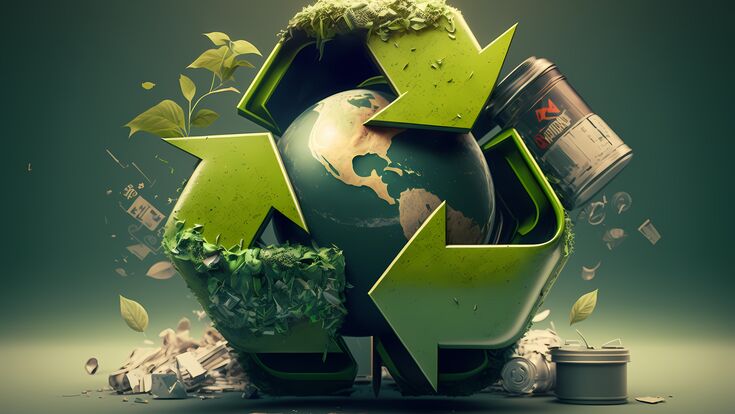Recycling Lives Services: Changing Waste into Belongings Resources
Recycling Lives Services: Changing Waste into Belongings Resources
Blog Article
Exploring Various Kinds Of Waste in Modern Waste Administration Equipment
The modern landscape of waste management includes browsing an intricate array of waste kinds, each requiring specialized handling and disposal techniques to alleviate ecological influences. Municipal strong waste, contaminated materials, digital waste, and natural waste each existing distinctive difficulties and chances for resource healing. Ingenious services such as wise waste bins and waste-to-energy technologies are arising as essential tools in enhancing performance and sustainability. Comprehending these waste kinds is vital for fostering public recognition and motivating active involvement in lasting techniques. What approaches can efficiently deal with these diverse kinds of waste while advertising a circular economic situation?
Metropolitan Solid Waste
Municipal solid waste, often referred to as family garbage or rubbish, includes a selection of discarded products created by household, commercial, and institutional sources within a town. This waste stream normally includes items such as packaging, food scraps, yard trimmings, paper, plastics, textiles, and discarded household items. The management of local solid waste is an essential element of urban preparation and public health, necessitating effective collection, transportation, and disposal systems.
Reliable waste monitoring systems are developed to minimize ecological effect while maximizing source recovery. This frequently entails a combination of methods consisting of composting, landfilling, and recycling. Recycling programs target materials like paper, glass, metals, and particular plastics, diverting them from garbage dumps and reintroducing them right into the production cycle. Composting organic waste, such as food scraps and backyard trimmings, not only minimizes land fill use however additionally generates useful soil modifications.
Districts need to additionally address the logistical and financial challenges connected with waste administration. Applying pay-as-you-throw systems, improving public awareness, and purchasing modern technology can dramatically improve waste diversion prices. By incorporating these methods, districts can foster sustainable neighborhoods, minimize greenhouse gas exhausts, and conserve natural deposits.
Contaminated Materials

Reliable contaminated materials administration includes several essential steps: identification, disposal, partition, and therapy. Recognition entails the category of waste based on its hazardous residential or commercial properties. Partition ensures that unsafe materials are kept individually from non-hazardous waste to avoid cross-contamination. Treatment techniques, such as chemical neutralization, incineration, and stabilization, are utilized to lower the toxicity, volume, or wheelchair of the waste. Disposal choices, including safe land fills and below ground storage space, are selected to make certain long-lasting containment.
Governing frameworks, such as the Source Conservation and Healing Act (RCRA) in the United States, offer guidelines and criteria for contaminated materials management. Adherence to these policies, paired with improvements in waste therapy technologies, is essential in reducing the threats related to contaminated materials.
Digital Waste
Electronic waste, commonly described as e-waste, represents a rapidly growing difficulty in waste management systems globally. This sort of waste incorporates disposed of digital gadgets and devices such as smart devices, computer systems, tvs, and other digital appliances. The fast pace of technical advancement, coupled with lowering helpful resources product life-spans and consumer demand for the most up to date gadgets, has actually significantly boosted the volume of e-waste generated every year.
E-waste is particularly problematic because of its complicated structure, usually containing hazardous substances like cadmium, mercury, and lead, which pose considerable ecological and health dangers if not properly handled. Alternatively, e-waste additionally has valuable materials such as gold, silver, and copper, which can be recuperated and reused. The double nature of e-waste-- both harmful and beneficial-- necessitates specialized handling, reusing, and disposal procedures.
Efficient e-waste monitoring includes strict regulatory structures, durable collection systems, and progressed recycling technologies. Public understanding and participation are essential, as inappropriate disposal practices, such as illegal dumping and informal recycling, intensify environmental contamination and carcinogen. Improving e-waste monitoring practices is vital for reducing eco-friendly effect and recouping useful sources in a significantly digital globe.

Organic Waste
Organic waste, making up kitchen area scraps, yard trimmings, and farming deposits, represents a considerable section of the international waste stream. This kind of waste is naturally degradable, indicating it can be broken down by microbes right into less complex natural substances. In spite of its capacity for natural decay, inappropriate management of organic waste can lead to damaging environmental influences, consisting of the emission of greenhouse gases such as methane, which add to environment modification.
Efficient administration of natural waste is vital for reducing these environmental effects (recycling lives services). Composting is a commonly embraced technique, transforming natural waste right into nutrient-rich compost that can improve dirt health and wellness and site farming productivity. In addition, anaerobic food digestion is an arising innovation that transforms organic waste into biogas, a renewable resource resource, and digestate, which can be utilized as fertilizer
Municipalities and waste management entities have to implement durable natural waste collection and therapy programs to optimize the benefits of these procedures. Public education projects can likewise play an essential function in motivating houses and companies to separate organic waste from various other types of waste. By focusing on the administration of organic waste, societies can decrease garbage dump use, reduced greenhouse gas discharges, and produce useful byproducts for farming usage.

Ingenious Waste Management
In the world of waste management, ingenious techniques are changing how cultures handle their refuse, intending for sustainability and performance. One famous advancement is the execution of clever waste bins geared up with sensors that keep track of fill levels and maximize collection routes.
An additional remarkable advancement is the adoption of waste-to-energy (WtE) technologies. By transforming non-recyclable waste into usable power with procedures such as incineration and anaerobic food address digestion, WtE reduces landfill burden and gives a renewable energy resource. In addition, developments in chemical reusing allow for the break down of complicated plastics right into their initial monomers, enabling the production of new, premium plastic products.
In addition, the circular economic situation model is acquiring traction, stressing the design of items and systems that focus on reusability and source performance. This alternative technique urges industries to reduce waste generation from the outset. Through these cutting-edge strategies, modern-day waste administration systems are not just resolving the prompt challenges of garbage disposal however additionally leading the way for a more lasting future.
Final Thought
An extensive understanding of local strong waste, contaminated materials, electronic waste, and organic waste, paired with the application of cutting-edge waste administration solutions, is critical for minimizing environmental influences. Incorporating modern technologies such as wise waste containers and waste-to-energy systems can boost effectiveness and sustainability. Effective waste monitoring strategies not just foster resource healing yet additionally promote public understanding and engagement, ultimately contributing to the advancement of a circular economy.
The modern landscape of waste management involves browsing a complex range of waste kinds, each calling for specialized handling and disposal methods to alleviate ecological effects. Community strong waste, harmful waste, digital waste, and organic waste each existing distinct difficulties and opportunities for resource healing.Digital waste, typically referred to as e-waste, stands for a swiftly expanding difficulty in waste management systems globally. Via these innovative strategies, modern waste administration systems are not just dealing with the immediate challenges of waste disposal yet additionally leading the means for an extra lasting future.
A comprehensive understanding of local strong waste, unsafe waste, electronic waste, and organic waste, paired with the implementation of innovative waste monitoring remedies, is crucial for minimizing environmental impacts. (recycling lives services)
Report this page